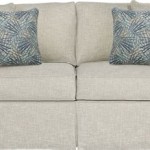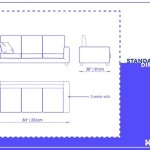Cover for Sofas: A Comprehensive Guide
Sofas are significant investments in home furnishings, serving as central pieces in living rooms and family spaces. Protecting these investments requires careful consideration of various factors, including wear and tear, spills, pet damage, and fading from sunlight. Sofa covers offer a practical and effective solution to these challenges, extending the lifespan of the furniture and maintaining its aesthetic appeal.
A wide array of sofa covers caters to diverse needs and preferences. Understanding the different types, materials, and fitting styles available allows consumers to make informed decisions that best suit their specific requirements. This guide explores the various aspects of sofa covers, providing valuable insights for selecting the ideal protection for any sofa.
Types of Sofa Covers
Sofa covers are broadly categorized into two main types: ready-made and custom-made. Ready-made covers are pre-designed to fit standard sofa sizes and shapes. They are readily available in various retail stores and online platforms, offering a convenient and often more budget-friendly option. However, achieving a perfect fit with a ready-made cover can be challenging, particularly for unusually shaped or sized sofas.
Custom-made covers, as the name suggests, are tailored to the exact dimensions of a specific sofa. This ensures a precise and snug fit, offering superior protection and a more polished appearance. While custom-made covers typically involve a higher initial investment, they offer a more long-term solution, providing a perfect fit and maximizing the lifespan of the sofa.
Slipcovers represent another popular category. These covers are designed to be easily removed and washed, offering convenient cleaning and maintenance. Slipcovers are particularly beneficial for households with children or pets, where spills and stains are more frequent. They are available in a wide variety of fabrics and styles, allowing for easy updates to a room's décor.
Materials Used in Sofa Covers
The material of a sofa cover plays a crucial role in its functionality and aesthetics. Several factors influence material selection, including durability, comfort, ease of cleaning, and aesthetic preferences. Common materials used in sofa covers include:
Cotton: A natural fiber known for its breathability and softness. Cotton covers are comfortable and relatively easy to care for, making them a popular choice. However, they may be susceptible to wrinkles and fading.
Polyester: A synthetic fiber known for its durability and wrinkle resistance. Polyester covers are easy to clean and maintain, making them suitable for high-traffic areas. They also offer good resistance to fading and shrinking.
Microfiber: A finely woven synthetic fiber that offers a soft, velvety texture. Microfiber covers are highly durable, stain-resistant, and easy to clean. They are also a popular choice for pet owners due to their resistance to pet hair and dander.
Leather: A natural material that offers a luxurious and sophisticated look. Leather covers are durable and easy to clean, but they can be more expensive than other options. They also require specific care and conditioning to maintain their appearance and prevent cracking.
Spandex/Stretch Fabrics: These materials offer excellent elasticity, ensuring a snug fit on various sofa shapes. Spandex blends are often used in slipcovers, providing a smooth and contoured appearance.
Choosing the Right Fit and Style
Selecting the right fit is crucial for maximizing the effectiveness and aesthetic appeal of a sofa cover. Accurate measurements of the sofa's length, width, and height are essential for ensuring a proper fit, especially for ready-made covers. Checking the manufacturer's size chart and guidelines is highly recommended.
Style considerations also play a significant role in choosing a sofa cover. The cover's style should complement the existing décor of the room. Various styles are available, from traditional and classic designs to modern and contemporary options. Factors such as color, pattern, and texture should be considered to create a cohesive and visually appealing space.
Care and Maintenance
Proper care and maintenance can significantly extend the lifespan of a sofa cover. Following the manufacturer's cleaning instructions is essential for preserving the material's integrity and appearance. Regular cleaning helps prevent the buildup of dirt, dust, and allergens. Most covers can be machine washed, but some may require professional cleaning, especially delicate materials like leather or silk.
Protecting sofa covers from direct sunlight can help prevent fading and discoloration. Rotating cushions regularly can also ensure even wear and tear. Promptly addressing spills and stains can prevent permanent damage. By following these care and maintenance guidelines, consumers can maximize the lifespan of their sofa covers and keep their sofas looking their best.
Investing in high-quality sofa covers offers numerous benefits, including protection from wear and tear, spills, and pet damage. Understanding the various types, materials, and fitting styles available allows for informed decisions and ensures the selection of the ideal cover to meet specific needs and preferences.
:max_bytes(150000):strip_icc()/9CraftingNook-499f3378b698461cb206f172f76a9286.jpg?strip=all)
20 Diy Couch Cover Ideas For Any Budget

Sofa Cover Maker S Premier Stretch Covers

Washable Sofa Covers Teal Beige Imperial Rooms

Sofa Covers Loose Chair Cover My Furniture

Best Couch Covers 2024 Forbes Vetted

Magic Sofa Cover Stretchable Patterns Slip Nation Slipcovernation

Cooling Sofa Cover Couch Protector Blanket Sweaterpicks

Waterproof Sofa Cover Anti Slip Reversible Light Dark Grey

Sofa Cover

Soft Cotton Minimalist Non Slip Sofa Cover Washable Cushion Furnit Sweaterpicks
Related Posts








